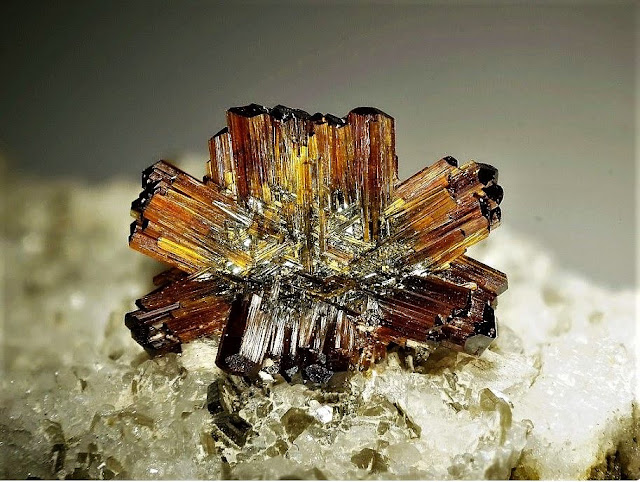Environmental Remediation With Rutile: Paving The Way For A Sustainable Future
 |
Rutile |
Rutile, a naturally occurring mineral composed primarily of titanium dioxide, is emerging as a powerful tool for environmental remediation, offering a pathway towards a sustainable future. With its unique properties and versatile applications, rutile is proving to be a valuable resource in addressing various environmental challenges.
Water Treatment: Rutile's photo catalytic properties make it effective in water treatment processes. By harnessing sunlight, Rutile can initiate chemical reactions that break down organic pollutants and purify water sources. Its high reactivity and stability make it a promising catalyst for the degradation of harmful contaminants, such as industrial waste and pesticides.
Air Pollution Control: Rutile-based coatings can be applied to surfaces, such as building exteriors and road pavements, to mitigate air pollution. The photo catalytic nature of rutile enables it to react with pollutants like nitrogen oxides and volatile organic compounds when exposed to light. This process results in the conversion of harmful substances into less harmful by products, contributing to improved air quality.
Soil Remediation: Contaminated soil poses a significant environmental challenge, but rutile shows promise in addressing this issue. When mixed with contaminated soil, Rutile can facilitate the breakdown of toxic organic compounds through photo catalysis, rendering them harmless or less harmful. Additionally, rutile's adsorption properties allow it to absorb heavy metals and other pollutants, further aiding in soil remediation efforts.
Waste Treatment: Rutile nanoparticles can be utilized in waste treatment processes, enhancing the removal of organic pollutants from wastewater and industrial effluents. Rutile-based catalysts can efficiently break down complex organic molecules, reducing the environmental impact of waste discharge and promoting cleaner production practices.
Oil Spill Clean-up: Rutile-based materials have demonstrated effectiveness in oil spill clean-up operations. By absorbing oil from contaminated water, rutile can aid in the recovery of marine ecosystems affected by spills. Its adsorption capacity and stability make it a valuable tool in mitigating the environmental damage caused by oil spills.
Sustainable Energy Production: Rutile's potential extends to renewable energy applications. It can be incorporated into dye-sensitized solar cells, improving their efficiency and making solar energy more accessible and sustainable. By utilizing rutile in solar technologies, we can reduce our dependence on fossil fuels and contribute to a greener future.
Rutile is a remarkable mineral with immense potential in environmental remediation. Its photo catalytic, adsorption, and stability properties make it a valuable asset in tackling water and air pollution, remediating contaminated soil, treating industrial waste, cleaning up oil spills, and advancing sustainable energy production. Rutile paves the way for a cleaner and more sustainable future, ensuring the well-being of our planet and future generations.



Comments
Post a Comment